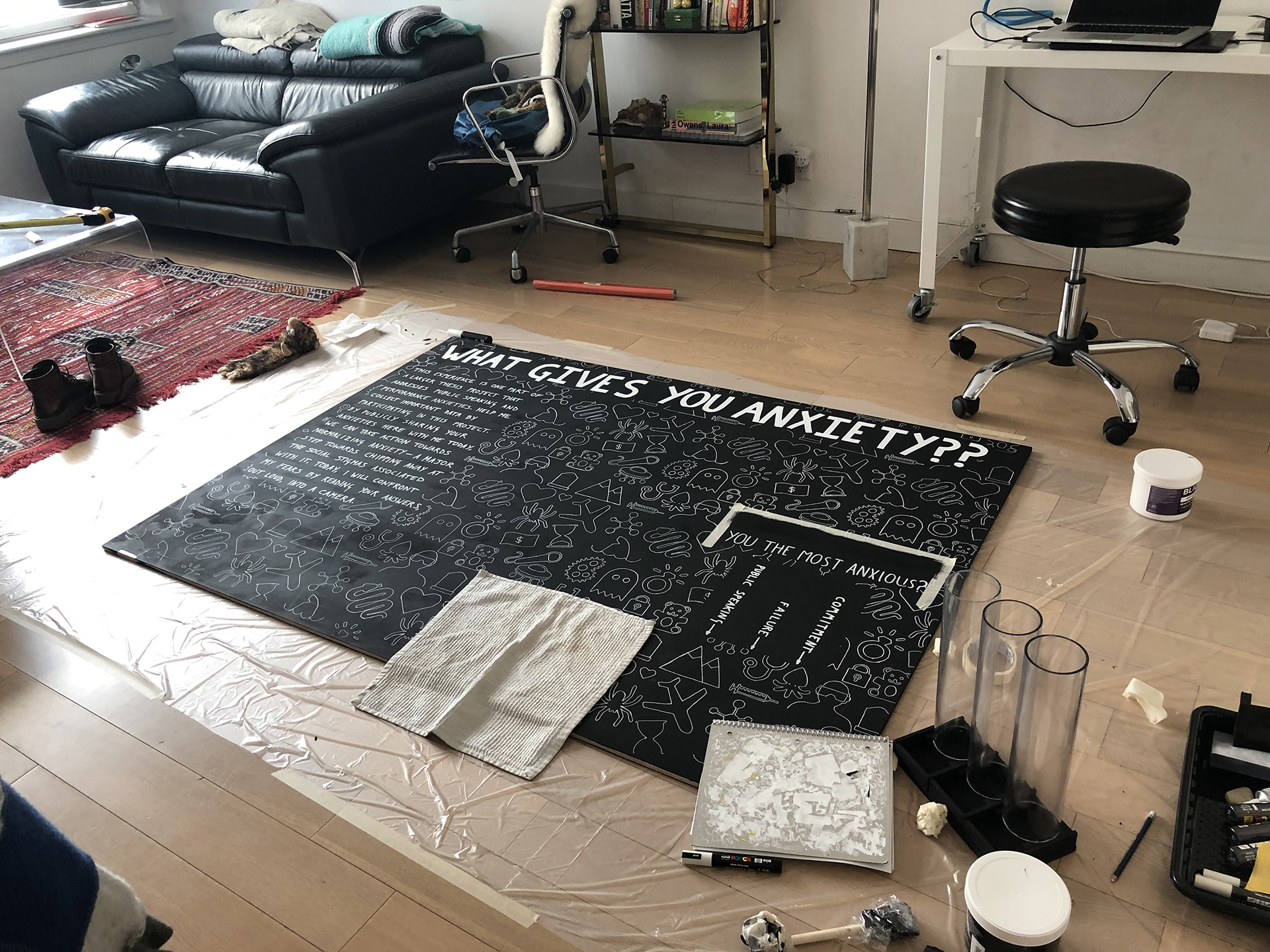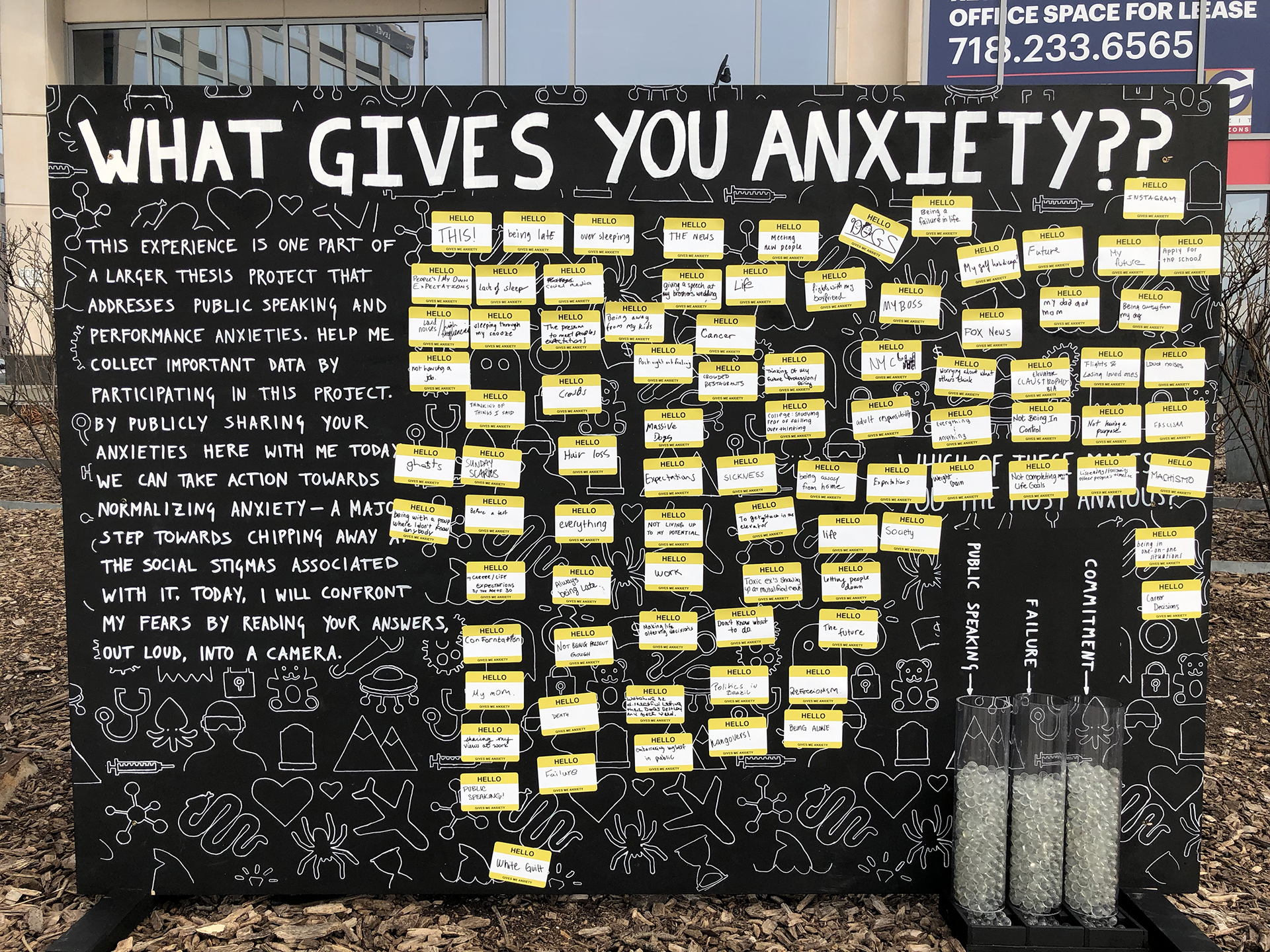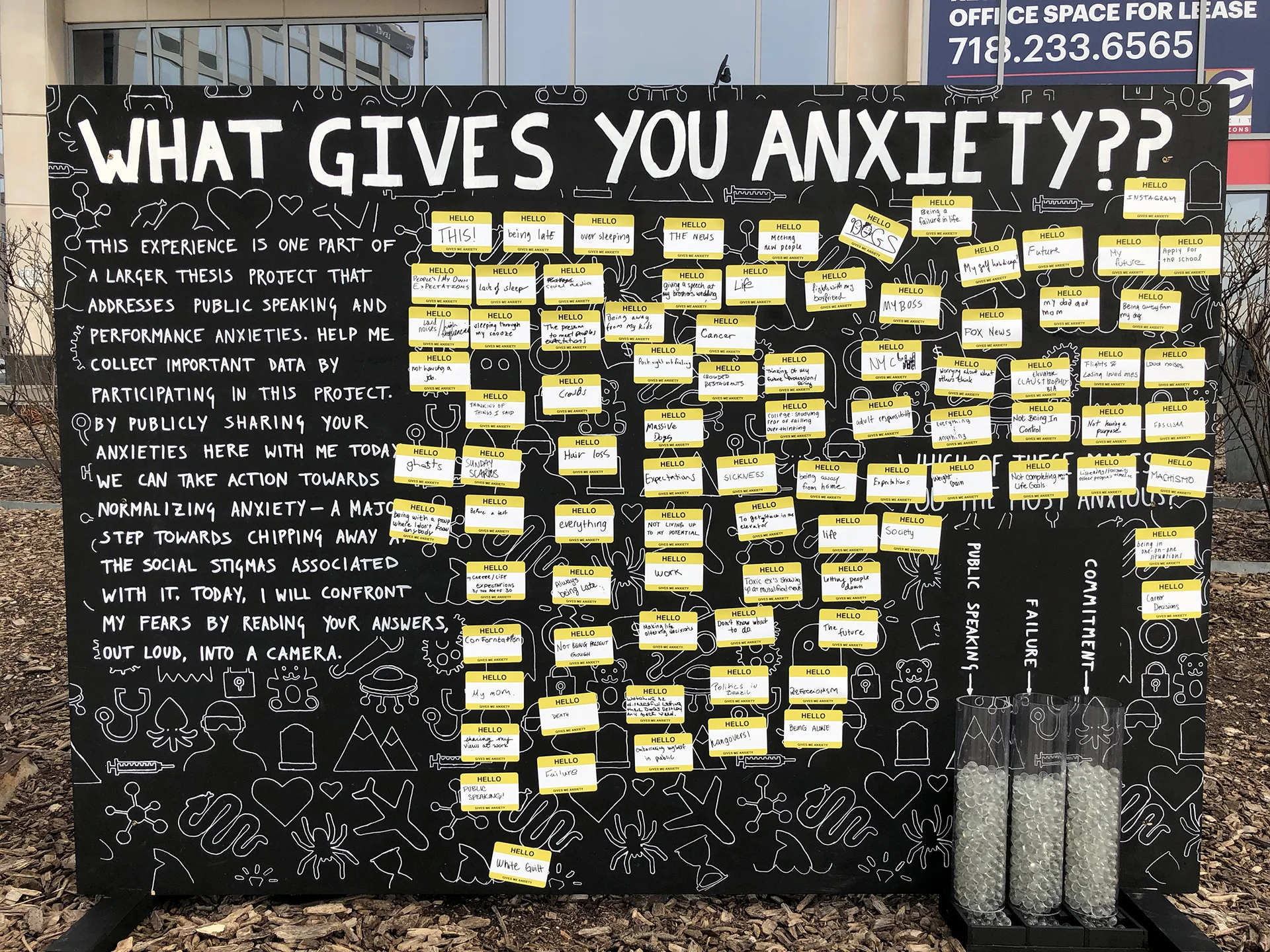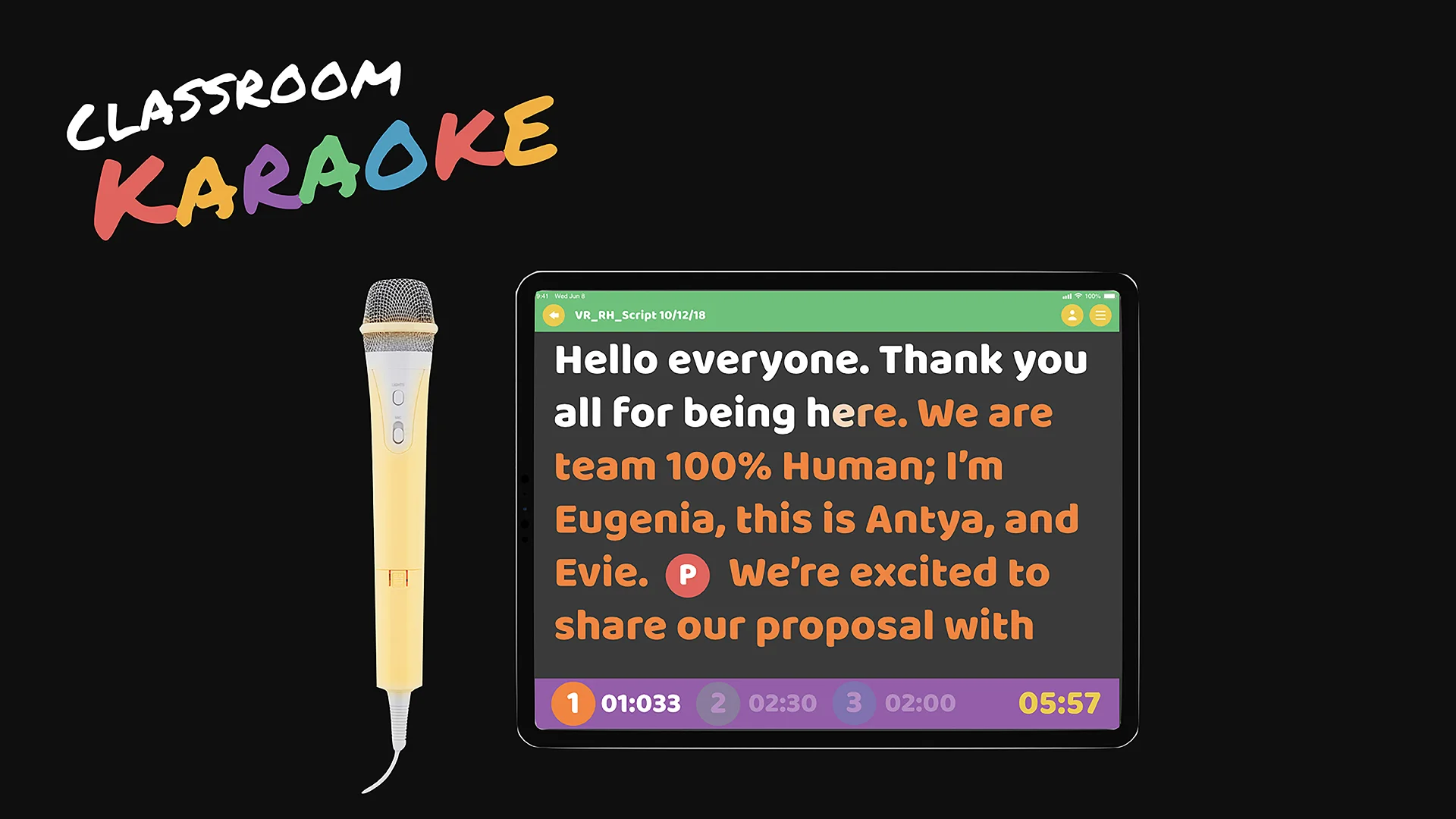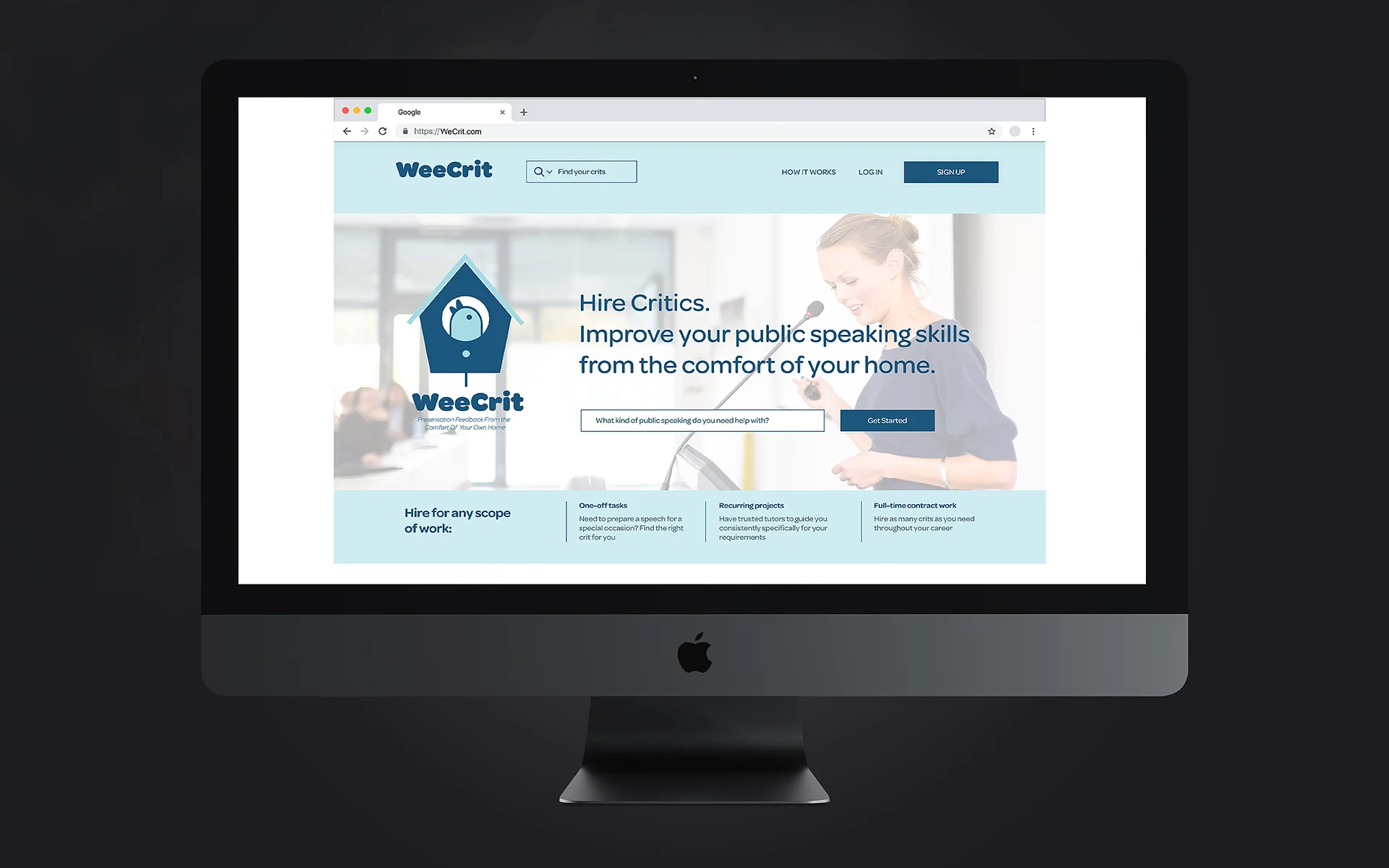PUBLIC SPEAKING ANXIETY: The Environments That Make or Break Us
As someone who has suffered from public speaking anxiety her whole life, Eugenia Ramos Alonso decided to face her fear and treat her condition as a case study and a personal challenge for her thesis, Public Speaking Anxiety: The Environments That Make or Break Us. Eugenia recognized that public speaking is a critical skill not only in professional and educational settings, but also at weddings, funerals, meetings, interviews, and legal cases. Throughout her study, Eugenia spoke with experts ranging from therapists to voice coaches, speech pathologists, storytellers, entrepreneurs, and educators; her research culminated in a set of designed tools that help people improve their communication skills, and de-stigmatize and overcome the anxiety caused by public speaking.
“The physical act of passing the microphone signifies the importance of letting everyone in your class participate in the conversation and being conscious of appropriate times to let others speak too.”
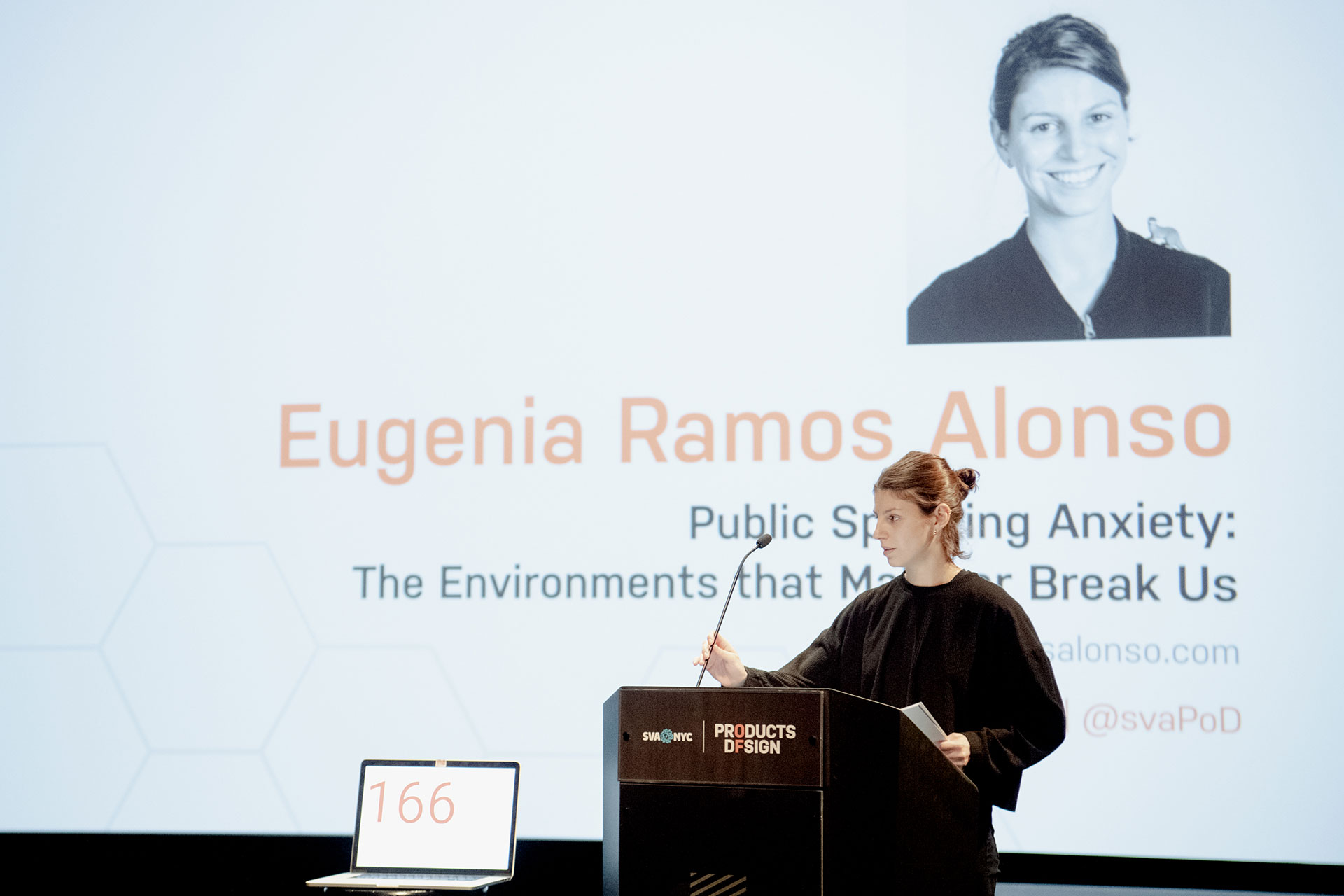
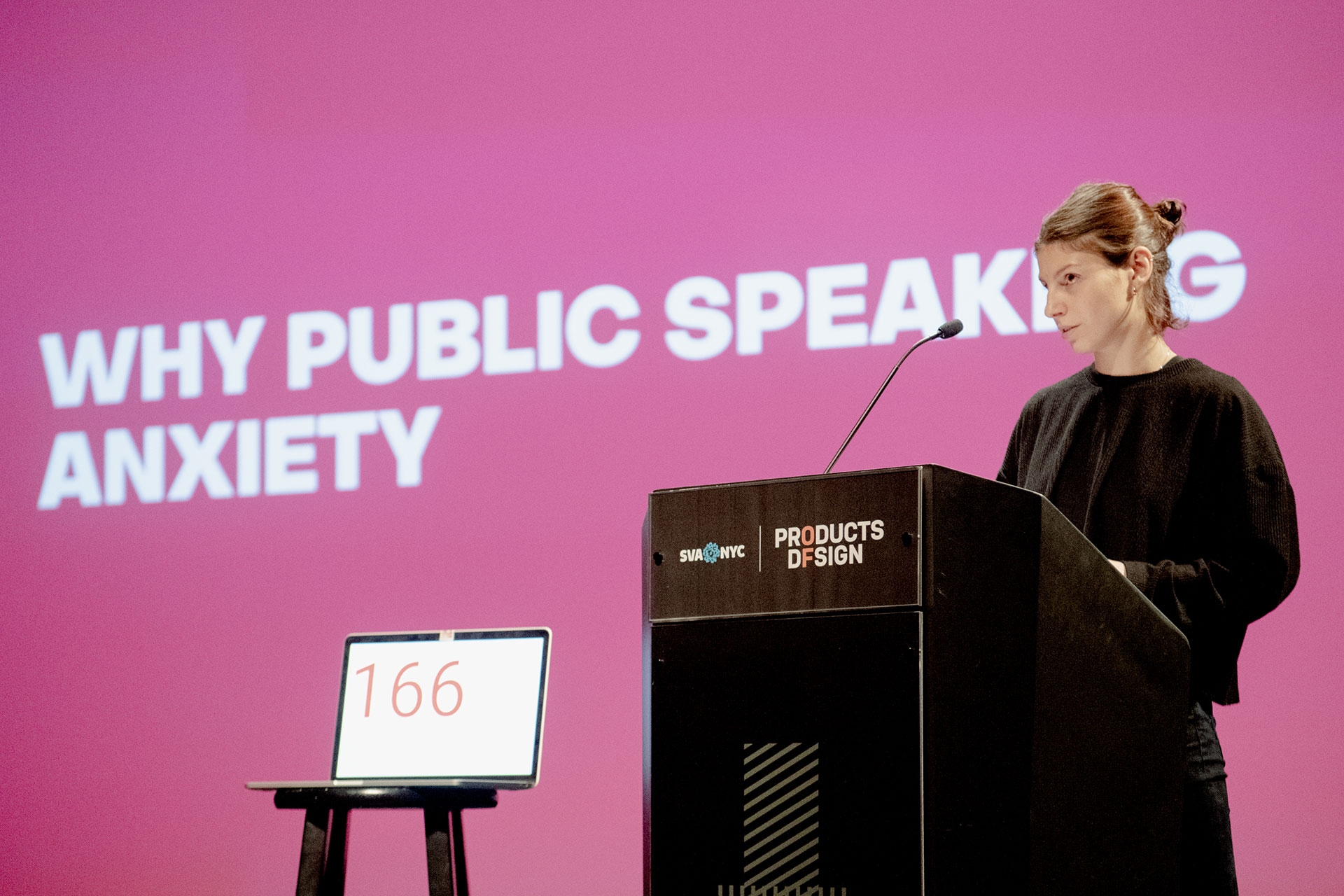
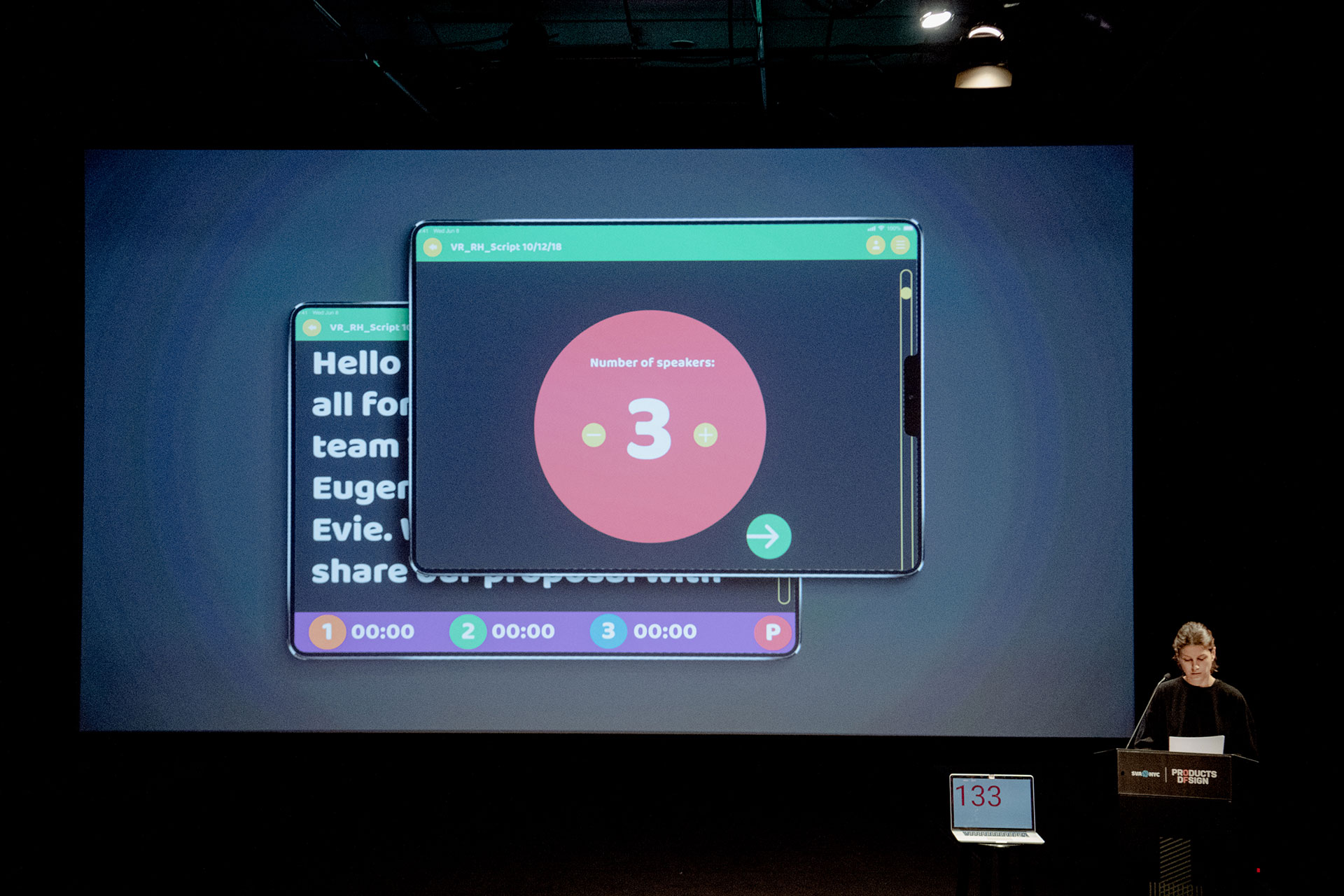
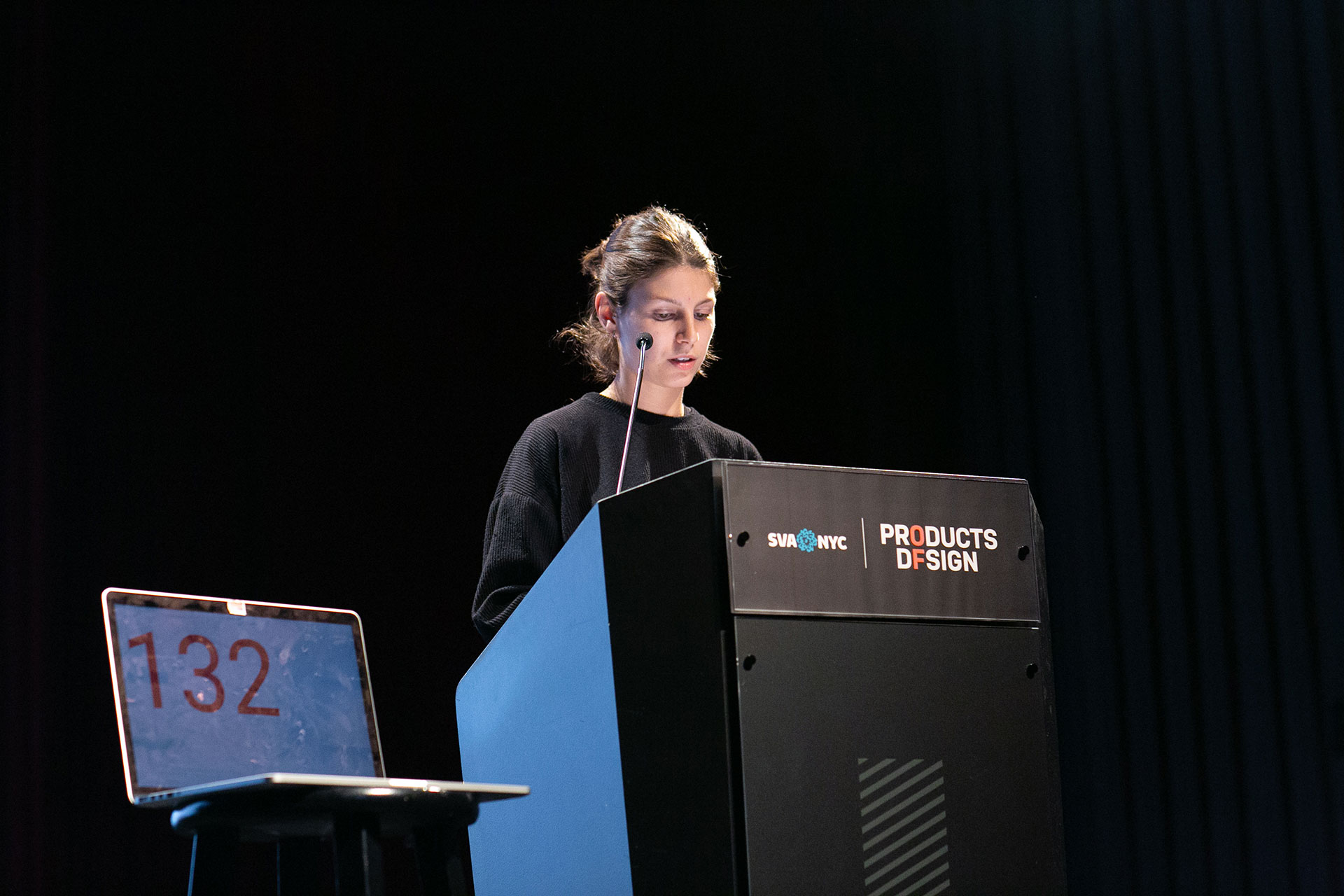
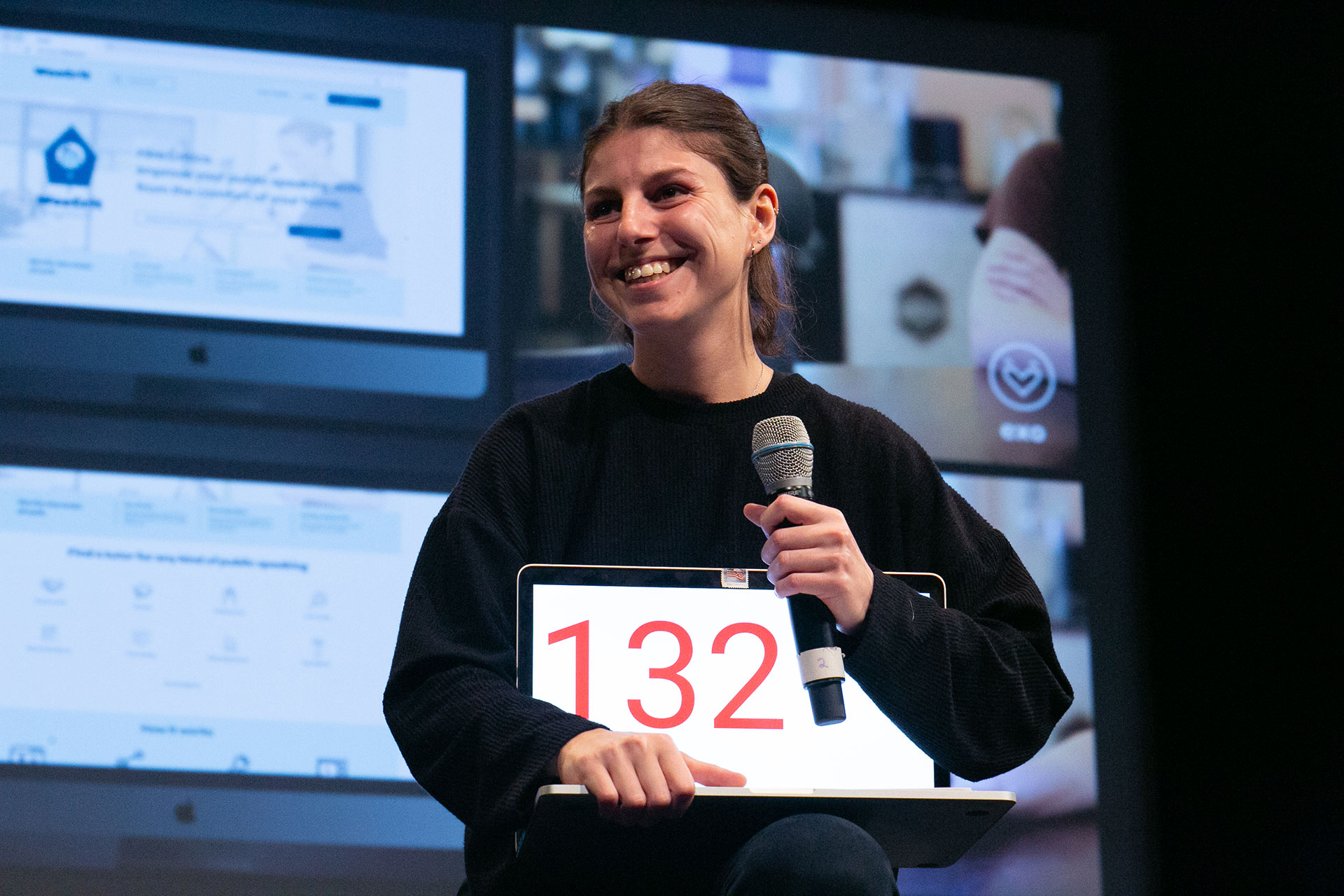
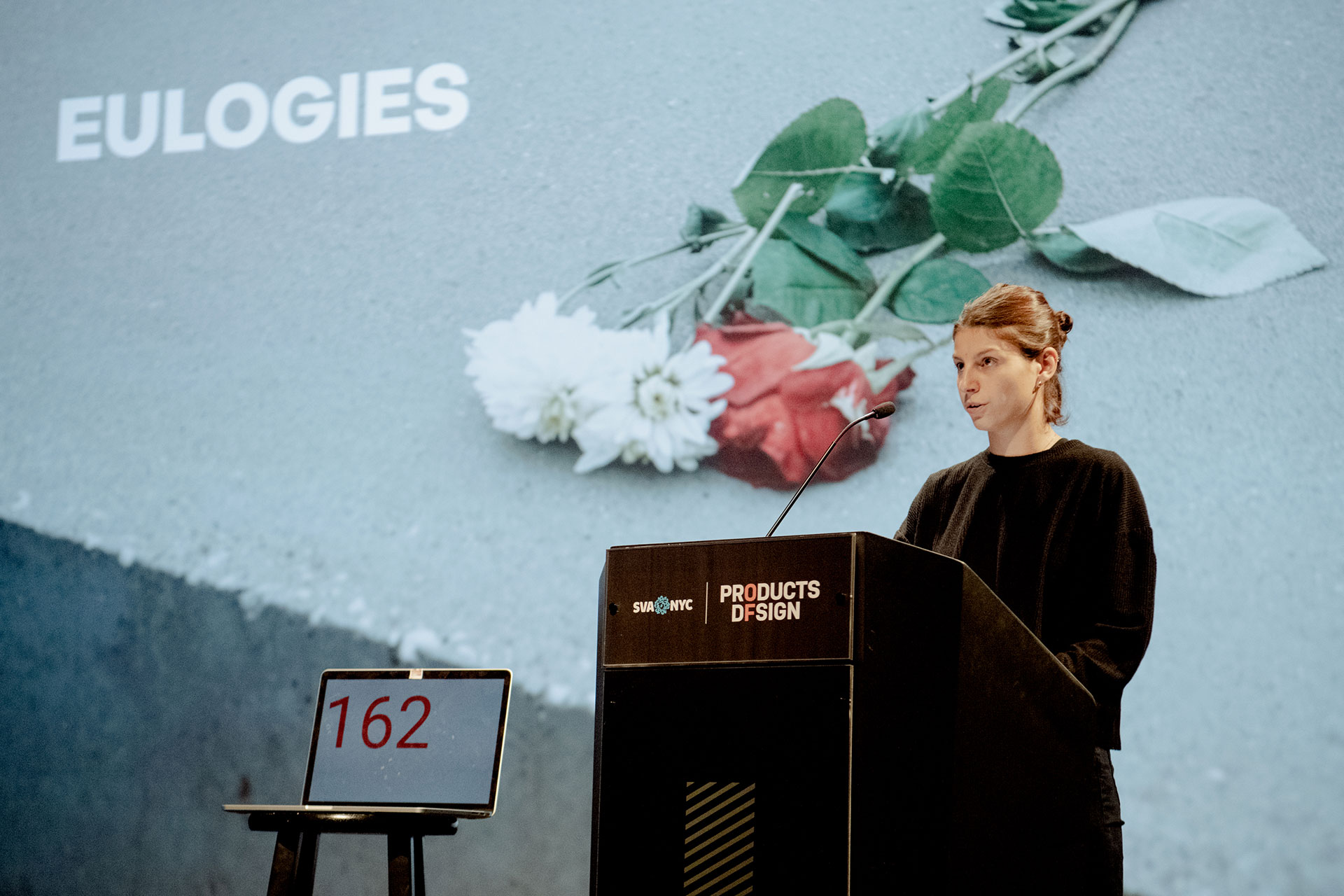
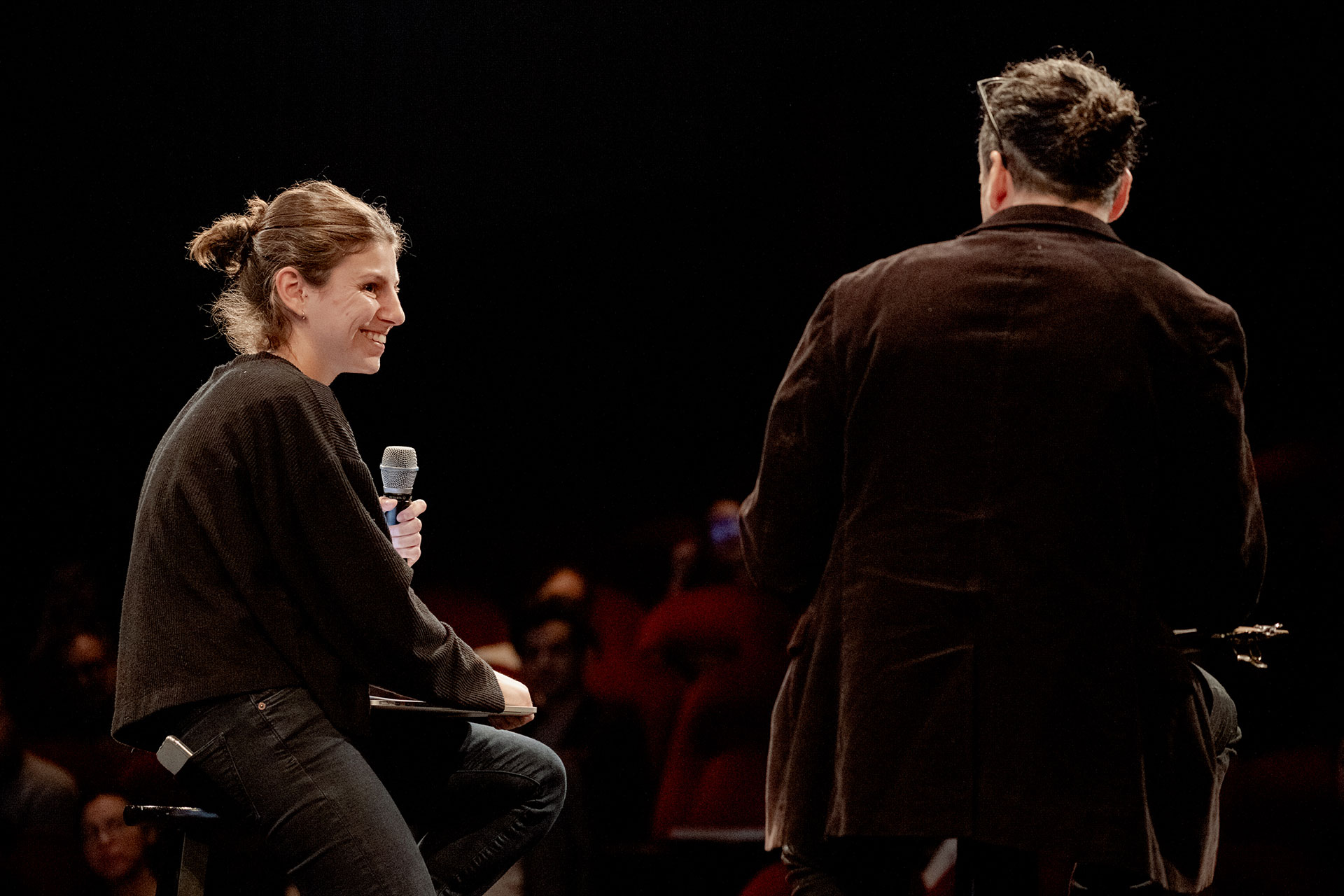
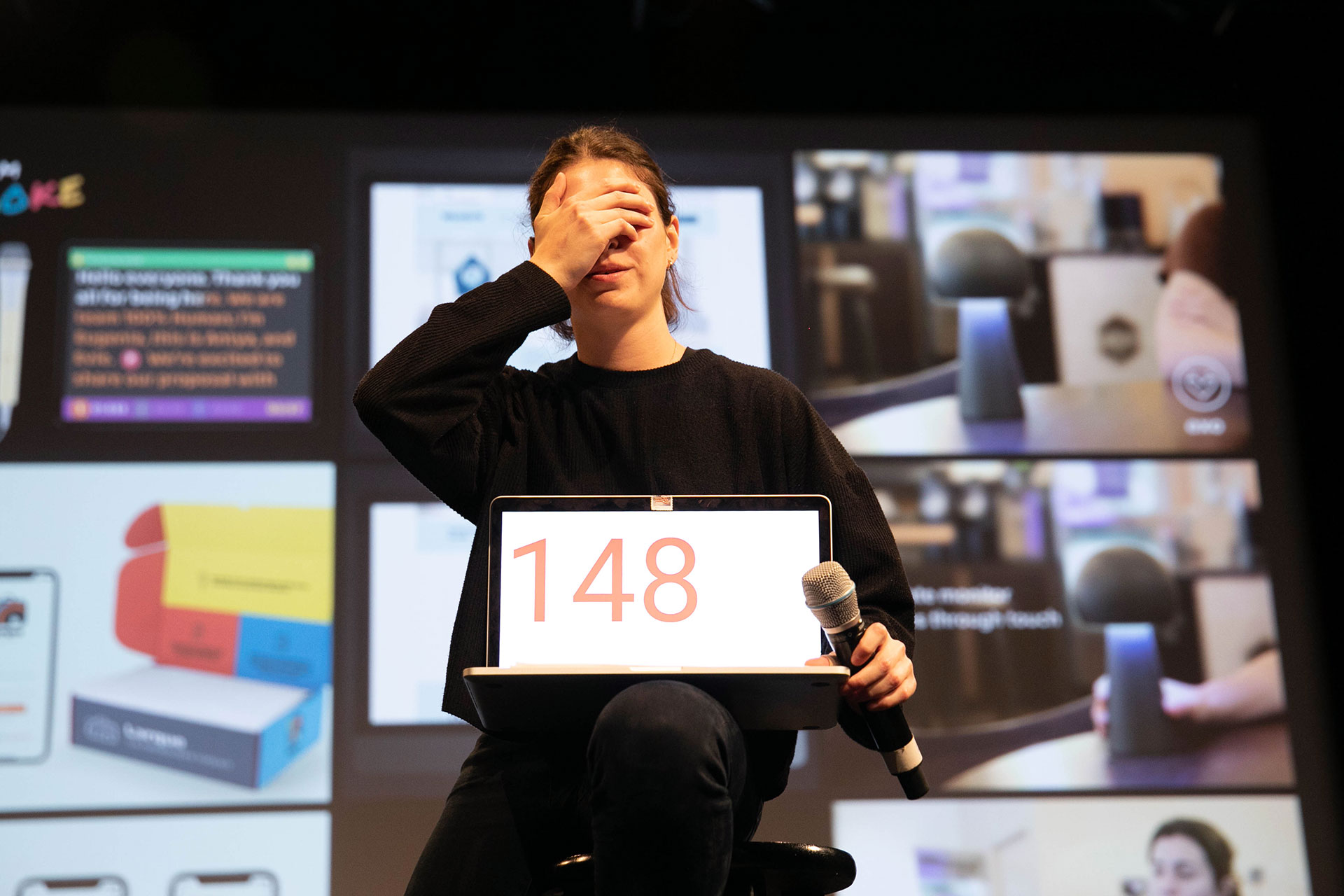
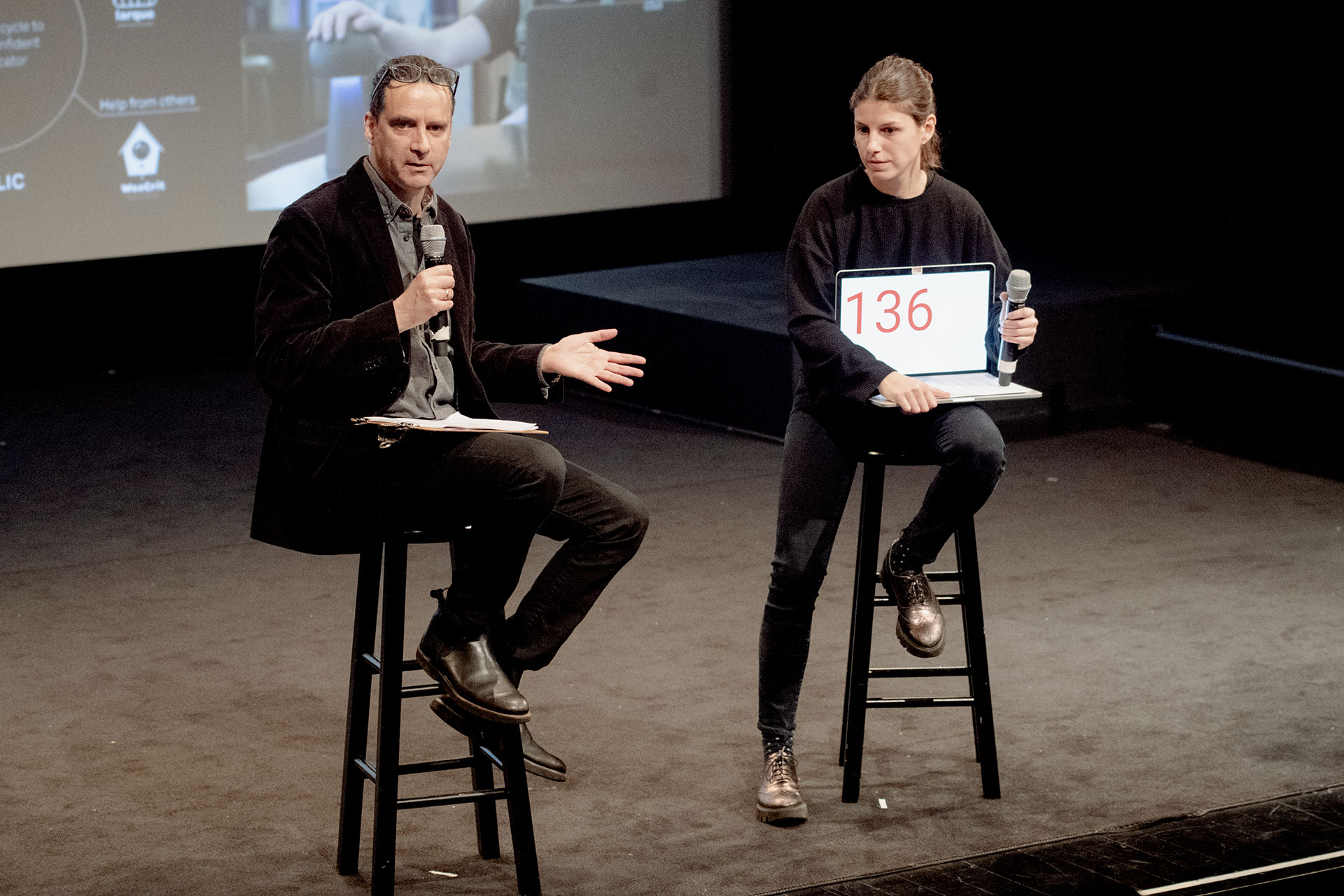
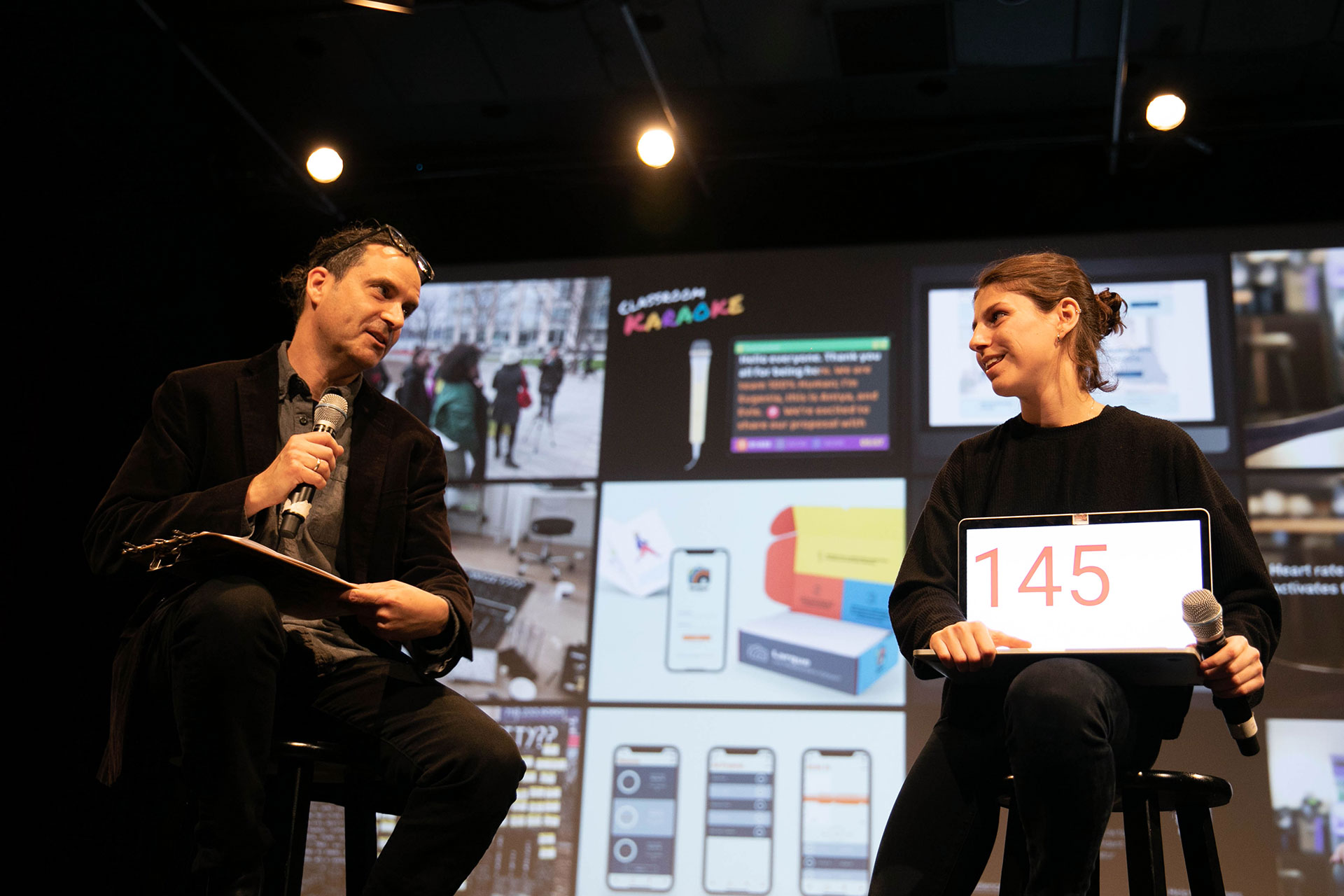
“What Gives You Anxiety?” | Public Intervention
To normalize anxiety and reduce the stigmas around it, Eugenia designed “What Gives You Anxiety?”, a public intervention where participants were encouraged to write their anxiety triggers on a sticker and add them to a large display board. Eugenia found that she had created a safe environment where nobody was forced to speak, and where people seemed genuinely interested in other’s anxieties and open to sharing their own. Multiple times throughout the day, participants commented on how “liberating” the experience was, proving that talking about anxiety is therapeutic and helps people gain perspective.
Classroom Karaoke
Classroom Karaoke is an app that allows users to create and upload presentation scripts to an iPad or tablet and practice them karaoke-style, helping the users to associate public speaking with something enjoyable. The app syncs with a physical microphone that communicates to the users whose turn it is to speak by lighting up with a different color for each member of the team. “The physical act of passing the microphone signifies the importance of letting everyone in your class participate in the conversation and being conscious of appropriate times to let others speak too,” Eugenia shared.
Larque
Larque is a toolkit that allows the user to record, play back, and analyze their speech content and patterns, while avoiding the anxiety triggers of practicing in front of others. Larque provides prompt cards that guide the user’s analysis of their speech. The kit also comes with a mobile app that helps users record practice runs and organize files. The app includes a voice-changing feature, to allow users to focus on their speech without the discomfort of hearing their own voice. While listening to the recording, users write down repeated words, filler words, and other mistakes to track their progress. Through encouraging awareness and repetition, Larque facilitates a space and methodology to change user behaviors and help them build confidence before giving a speech or presentation.
WeeCrit
WeeCrit is a service and online platform that offers users presentation feedback from experts, without having to leave their comfort zone. Users create their own profiles and upload videos of themselves performing any kind of public speaking, speech, or presentation. The user specifies the context for their performance, and the goals they want to achieve through the service; the app then matches the user with experts in communication, specifically in the user’s field, and allows the user to choose who they want to work with. WeeCrit offers in-app messaging and video chat between the user and their mentors, to facilitate communication and useful feedback. The user can also choose to hire their chosen expert(s), to establish a student-mentor relationship.
exo
exo is a mindfulness tool designed to visually externalize anxiety symptoms—specifically, a racing heartbeat. Responding to touch, exo translates the user’s heartbeat into a pulsing light, allowing the user to recognize their anxiety as a tangible thing, and prompting them to practice mindfulness exercises to regain control and confidence. “Being able to physically see their heart rate return to normal helps users believe in the process and their own self-control,” says Eugenia. exo was designed to blend in with other desktop objects, while remaining pleasant to the touch.
To learn more about Eugenia Ramos Alonso’s work, take a look at her projects in more detail at eramosalonso.com.





